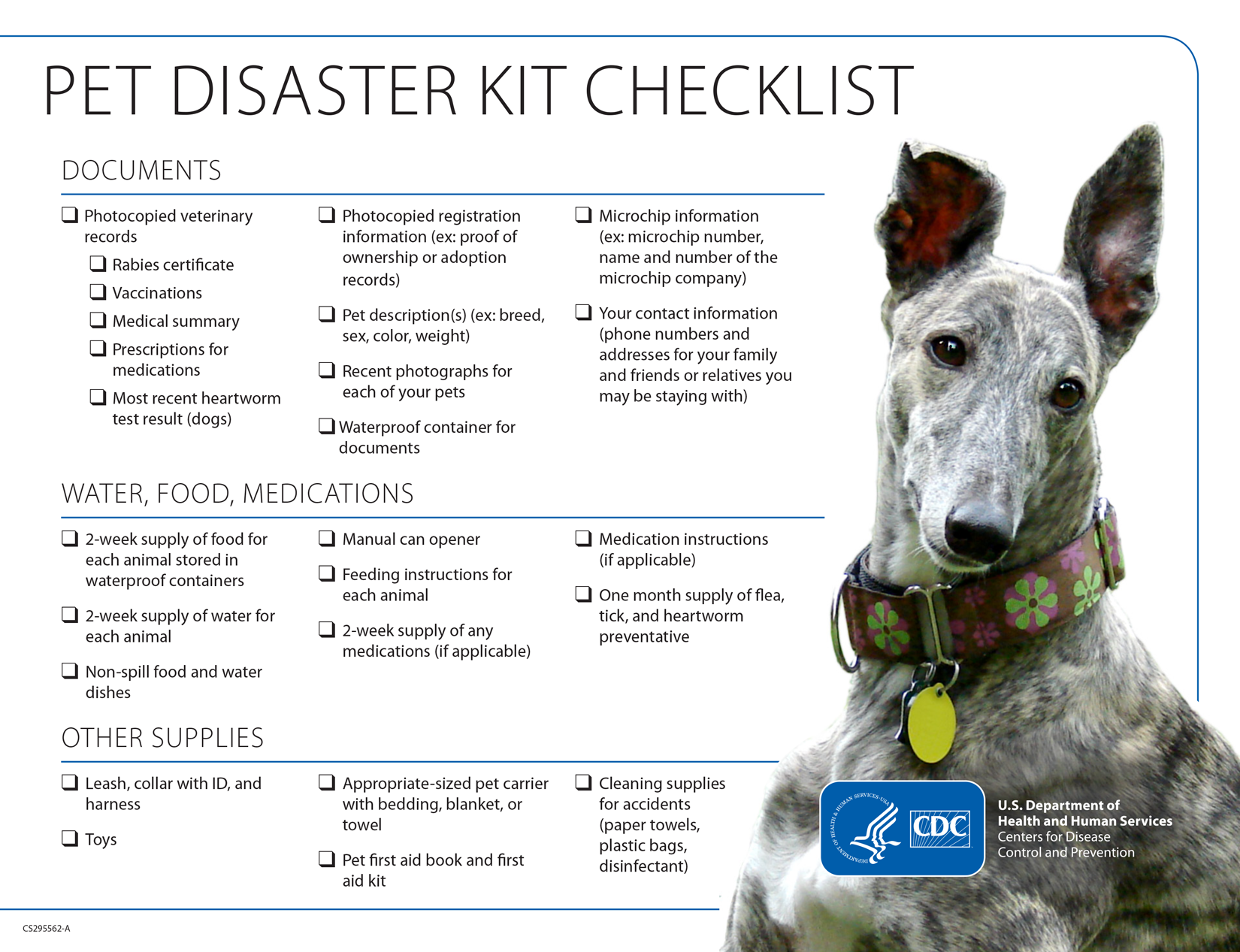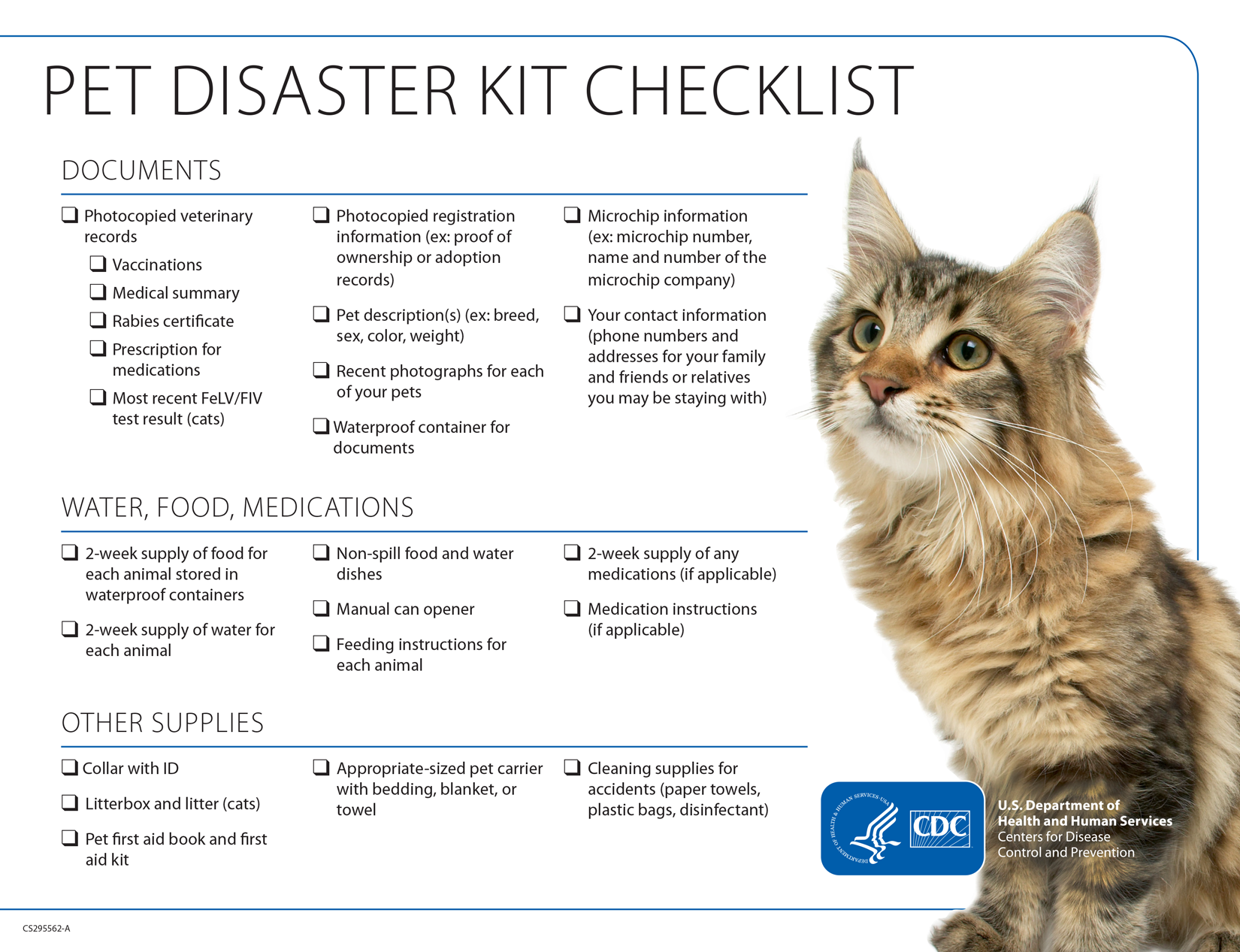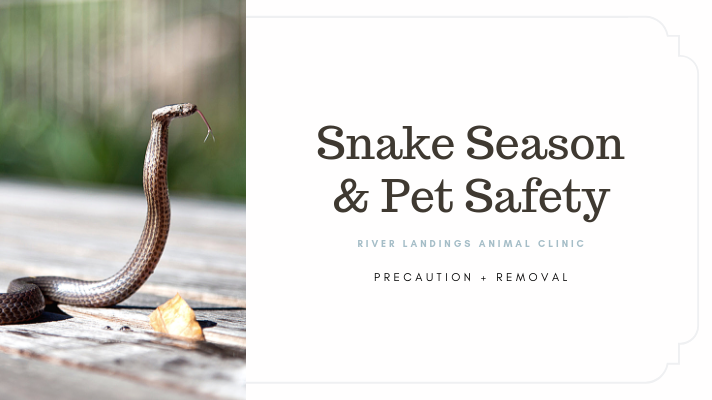Pets are family – do you have a plan for your pet in an emergency? Including pets in emergency plans helps your family’s ability to respond to an emergency. Be prepared: make a plan and prepare a disaster kit for your pet.
Leaving pets out of evacuation plans can put pets, pet owners, and first responders in danger. Even if you try to create a safe place for them, pets left behind during a disaster are likely to be injured, lost, or worse. Before a disaster strikes, find out what type of shelters and assistance are available in your area to accommodate pets and include pets in your family disaster plan to keep them safe during an emergency.
Don’t wait until it’s too late. Start today by including your pet in your family’s preparedness plans to protect the health of yourself, your family, and your pet.
Make a Plan
To get started, familiarize yourself with the types of disasters that could affect your area and consider your options for providing care for your pet(s).
Disasters can happen without warning, so be prepared:
Make sure your pet(s) wear collars and tags with up-to-date contact information and other identification.
Microchip your pet(s) – this is one of the best ways to ensure that you and your pet are reunited if you are separated. Always be sure to register the microchip with the manufacturer and keep your contact information up to date with the microchip company.
Purchase a pet carrier for each of your pets (write your pet’s name, your name, and contact information on each carrier).
Familiarize your pet with its carrier before a crisis.
Practice transporting your pet by taking them for rides in a vehicle similar to one you would be evacuating in.
Practice catching your pet, if needed.
Keep a leash and/or carrier near the exit.
Make sure you have proper equipment for pets to ride in the car (carriers, harnesses, pet seatbelts).
If you do not have a car, make arrangements with neighbors, family, and friends. You can also contact your local government to learn about transportation options during a disaster.
Sheltering in Place
When sheltering at home with your pet, make sure the room chosen is pet-friendly in the following ways:
Select a safe room, preferably an interior room with no (or few) windows.
Remove any toxic chemicals or plants.
Close off small areas where frightened cats could get stuck (such as vents or beneath heavy furniture).
Sheltering During an Evacuation
Contact your local emergency management office and ask if they offer accommodations for owners and their pets.
If accommodations are needed for your pet(s):
Contact local veterinary clinics, boarding facilities, and local animal shelters. Visit the Humane Society website to find a shelter in your area.
Contact family or friends outside the evacuation area.
Contact a pet-friendly hotel, particularly along evacuation routes.
Remember to take your pet’s emergency kit with you.
Make plans before disaster strikes for where you and your pets will go. Be aware that pets may not be allowed in local human shelters, unless they are service animals.
Check with:
Family or friends outside the evacuation area.
Pet-friendly hotels
bringfido.com or call 877-411-FIDO
dogfriendly.com or call 888-281-5170
doginmysuitcase.com or call 8880254-0637
pet-friendly-hotels.net or call 866-966-3046
pets-allowed-hotels.com or call 800-250-1625
petswelcome.com
tripswithpets.com
Prepare a Pet Disaster Kit
Prepare a disaster kit for your pet(s) so evacuation will go smoothly. Ask your veterinarian for help putting it together. Some examples of what to include are listed below; when making the kit, think about your pet’s basic needs, prescriptions, and paperwork.
Disaster Supplies for Pets
Leash, collar with ID, and harness
Appropriate-sized pet carriers with bedding and toys
Food (in airtight waterproof containers or cans) and water for at least 2 weeks for each pet
Food and water bowls and a manual can opener
Plastic bags for dog poop and a litter box and litter for cats
Cleaning supplies for accidents (paper towels, plastic bags, disinfectant)
Medications for at least 2 weeks, instructions and treats used to give the medications, and a pharmacy contact for refills
Flea and tick medication and heartworm preventative for 1 month
Documents
Photocopied veterinary records (rabies certificate, vaccinations, recent FeLV/FIV test results for cats, prescriptions, etc.)
Registration information
Recent photos of your pet
Contact information for you and friends or relatives
Boarding instructions, such as feeding schedule, medications, and any known allergies and behavior problems
Microchip information
A pet first aid book and first aid kit
Documents, medications, and food should be stored in waterproof containers
Protect Yourself from Injury and Illness
Emergencies can put stress on both people and animals, and natural disasters can contribute to the spread of some diseases. Exposure to inclement weather conditions, stagnant water, wildlife or unfamiliar animals, and overcrowding can put both you and your pet at risk for getting sick. Some diseases can be spread between animals and people, such as rabies, ringworm, leptospirosis, and diseases spread by mosquitoes, fleas, and ticks like West Nile and Lyme disease.
Knowing some practical skills ahead of time will help you be prepared to prevent illness and injury during a disaster.
How to Keep Yourself and Your Pets Healthy During a Disaster
Wash your hands after handling your pet, its food, or its waste.
Do not let your pet lick your face or hands.
Keep your pet up-to-date on all vaccinations and heartworm, flea, and tick preventatives.
Practice safe handling of your pet, because your pet may behave differently during a stressful situation.
Keep your pet in a carrier or on a leash.
Do not allow your pet to interact with other animals, especially wildlife and stray animals.
Report any bite wounds to medical personnel immediately.
Properly clean and disinfect cages and litterboxes. Wash your pet’s bedding regularly.
Avoid stagnant water, especially after flooding occurring after natural disasters.
Don’t allow pets to play in or drink contaminated water.
What To Do if You Are Separated from Your Pet
Make sure that your family is in a safe location before you begin your search.
If you are in a shelter that houses pets, inform one of the pet caretakers. Give the pet caretaker your pre-made missing pet handout.
Once you have been cleared to leave the shelter and return home, contact animal control about your lost pet.
Last, call or log into the microchip company to make sure all the information about you and your pet is updated and current.
Hear From Us Again
Don't forget to subscribe to our email newsletter for more recipes, articles, and clinic updates delivered to your inbox (here). Or, you can keep up to date by liking and following our Facebook page (here).
Related: We have more information under our cat health + dog health + client care categories.








